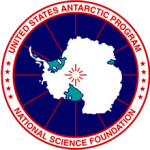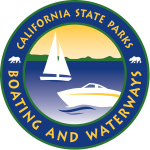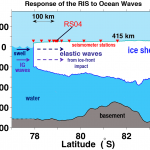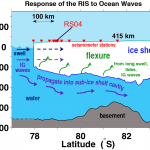Taking the Pulse of the Ross Ice Shelf
Ocean-Ice Shelf Interactions - Gravity Waves
Gravity waves are what we normally think of as “wind waves”, such as the ocean swell generated by storms at sea that propagate to our beaches with periods of 10-30 seconds. In addition to Southern Ocean storm waves, long period swell from the North Pacific impacting the California coast also impacts the RIS [Bromirski et al., 2010]. Infragravity (IG) waves are generated when swell reaches shallow coastal waters and are transformed into sub-harmonics of the original wave [Herbers et al., 1995]. For example, IG waves are continuously generated as swell propagates southward along the west coast of North America [Bromirski and Gerstoft, 2009]. Some of the IG-wave energy leaks off the continental shelf and becomes “free waves” that can propagate across the Pacific Ocean from North America to the Ross Ice Shelf in Antarctica [Cathles et al., 2009; Bromirski et al., 2010]. IG waves have longer periods (50-300 seconds), long wavelengths (over 15 km), and propagate rapidly in the open ocean. Source locations of infragravity waves impacting the RIS include the coasts of South, Central, and North America from the California coast north of Cape Mendocino to the southern coast of Alaska where storm and associated wave activity are highest [Bromirski et al., 2016]. Along coasts, IG waves augment wave setup, also called "surf beat", and contribute to beach erosion.
Stress from Gravity Wave Flexing
In the ice-free austral summer, swell impacting the shelf front generally causes calving of relatively small icebergs, although periodically large tabular icebergs are calved. However, during colder winter months, free-floating sea-ice effectively damps virtually all ocean swell, eliminating swell impacts at the shelf front. The much longer wavelength IG waves, in contrast, are apparently undamped by sea-ice, and induce an ice shelf response even in winter.
The flexing of ice shelves by infragravity waves could provide the additional external forcing needed to extend existing fractures (rifts), thereby triggering sudden ice shelf collapse. The seismic measurements across the Ross Ice Shelf will provide the first comprehensive data on IG-wave amplitudes and the spatial, mechanical and elastic response of ice shelves to gravity wave forcing, both important to understand the ice-shelf evolution and disintegration processes.
References & Further Information
Bromirski, P.D. and P. Gerstoft (2009).
Dominant source regions of the Earth's "hum'' are coastal.
Geophysical Research Letters. 36 doi: 10.1029/2009gl038903
Bromirski, P.D., O.V. Sergienko, D.R. MacAyeal (2010).
Transoceanic infragravity waves impacting Antarctic ice shelves,
Geophys. Res. Lett., 37, L02502, doi:10.1029/2009GL041488
Herbers, T.H.C. , Steve Elgar, R.T. Guza, and W.C. O'Reilly (1995).
Infragravity-Frequency (0.005–0.05 Hz) Motions on the Shelf. Part II: Free Waves. J. Phys. Oceanogr., 25, 1063–1079, doi: http://dx.doi.org/10.1029/95JC02680
- Swell and IG waves both impact the face of the ice shelf, generating high speed elastic waves. [mouse-over for pause/play controls]
- Unlike swell, much of the IG wave energy can penetrate the sub-shelf water cavity. [mouse-over image for pause/play controls]
Bromirski, P. D., R. E. Flick, and A. J. Miller (2016). Storm surge along the Pacific coast of North America,
J. Geophys. Res. Oceans, 121, doi:10.1002/2016JC012178
Cathles, L. M., IV, E. A. Okal, and D. R. MacAyeal (2009). Seismic observations of sea swell on the floating Ross Ice Shelf, Antarctica, J. Geophys. Res., 114, F02015, doi:10.1029/2007JF000934







